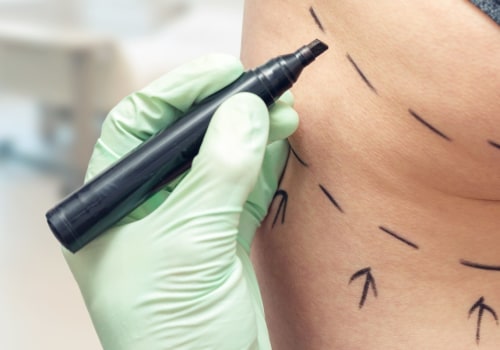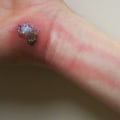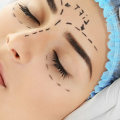Nose surgery (rhinoplasty) Nose surgery is the most popular facial cosmetic surgery procedure, and it has been for several years. Breast augmentation or enlargement (augmentation mammoplasty).
Plastic surgery
is growing in popularity every year, with nearly 18 million surgical procedures being performed in the United States annually. Men contribute to the boom of procedures.The following are the 10 most common plastic surgery procedures. Liposuction is a surgical procedure that sucks fat from specific areas of the body to provide a slimmer, more shaped silhouette. There are several types of liposuction. In tumescent liposuction, the most popular type, a saline solution, a drug for narrowing blood vessels, and an anesthetic agent are infused into the area to be treated.
In ultrasound-assisted liposuction (UAL), the cannula releases ultrasonic energy to melt fat and suck it out of the body. UAL has more risks than tumescent liposuction, including the risk of internal and external burns and longer surgery. Other options include laser liposuction, energy-assisted, air-assisted, and suction-assisted. Commonly known as a tummy tuck or lower body lift, abdominoplasty removes excess skin from the abdominal area and tightens the remaining skin.
This surgery is often done on people who have excess skin after being pregnant or after losing a lot of weight after bariatric surgery. A woman's breast reduction surgery is one of the few plastic surgeries that insurance routinely pays for, as the benefits go far beyond an improved appearance. Women with breasts that are too heavy or too large often have difficulty finding clothes that fit them well, experience chronic back pain, neck pain, chronic rashes, and poor posture. A nose job, or rhinoplasty, reshapes the nose to balance it with the rest of the face.
The surgeon may reduce the overall size of the nose or refine areas of the nose to achieve a more pleasing appearance. Blepharoplasty (eyelid reshaping surgery) may be covered by your health insurance if the reason for the surgery is medical. Sagging eyelid skin can obstruct vision and is a common medical complaint in older people. If your doctor recommends blepharoplasty for medical reasons, insurance should cover it, but check with your insurance provider first.
Breast reduction surgery may be covered by insurance if performed for medical reasons. Breast enlargement surgery is cosmetic surgery that is not covered by insurance. Male breast reduction surgery may be covered by insurance if it is considered medically necessary to treat gynecomastia. Martin S and Las Cruces NM.
Facial cosmetic surgery focuses on improving the patient's facial appearance. Common surgical procedures include rhinoplasty, blepharoplasty (eyelid surgery), rhytidectomy (facelift), brow lift, genioplasty (chin augmentation), otoplasty (ear repositioning), liposuction, and fat transfer. Many patients seek surgical treatment to reverse the changes that occur with aging, such as sagging skin, decreased tissue volume around the face and neck, crow's feet in the corner of the eyes, fine lines on the forehead, loss of the jaw contour, sagging double chin, and double chin. With more people participating in cosmetic surgery, you need to ask yourself which procedures are the most popular among plastic surgery patients.
We have gathered the 10 most popular plastic surgery procedures that women and men are currently involved in to restore or rebuild their bodies. Facial procedures are increasing in popularity due to widespread advertising and increased acceptance in society. Blepharoplasty has been at the top of the lists of cosmetic procedures for a long time. It consists of removing excess skin around the eyelids.
From a medical point of view, this procedure can help improve vision. From an aesthetic point of view, it can give your eyes a more youthful and supple appearance. Non-invasive procedures include things like Botox, dermal fillers, and chemical peels. Liposuction has been close or in the number one place for cosmetic procedures.
This procedure can help with fat and weight loss in people who have had trouble losing excess weight. Liposuction can also be combined with other facial cosmetic procedures, but it is most often performed on the hips, stomach, thighs or buttocks. Tummy tuck is also a very common procedure and is known as a tummy tuck. Plastic surgery has become very popular for both women and men in recent years, using different cosmetic procedures to improve various characteristics of the body and face.
As for advances in surgical techniques, procedures are being developed to drive native facial muscles with the masseteric branch of the trigeminal nerve with minimal lesions at the donor site, as well as studies on the use of cruciate nerve grafts for resuscitation of the paralyzed face. The scope of practice of facial plastic surgeons in the United States may include rhinoplasty, brow lift, blepharoplasty, facelifts, microvascular reconstruction of the head and neck, reconstruction of craniomaxillofacial trauma, and correction of defects in the face after skin cancer resection. Andrew Jacono, who specializes in facial plastic surgery, told INSIDER that although there has been increasing popularity in facial fillers, he has seen more patients opting for facelifts. In a neck lift procedure, surgeons typically squeeze the platysma muscle along the neck to improve the overall appearance of the patient's neck.
After a facial transplant, the patient may look similar to the donor, but due to variations in the skeletal structure and facial shape of the recipient, the result is a hybrid of the two faces. When a person looks intently at themselves in a mirror and sees how life has made obvious claims about specific facial features, many begin to think about having a facelift to reverse the hands of time. Current trends in facial plastic surgery include the increased use of non-surgical techniques such as fillers and neurotoxins to treat facial aging, the development of new laser technologies, the use of 3-D imaging techniques for the placement of individualized plaques in maxillofacial surgery in trauma and minimally invasive techniques such as endoscopic approaches to minimize scarring. Most of the face and neck are composed of a fasciocutaneous structure and can be more easily repaired by microsurgical procedures; however, lesions that affect the neuromusculature of the midface may warrant a facial transplant.
Repair of craniofacial injuries due to trauma, removal of tumors or congenital abnormalities is an important aspect of facial plastic surgery, and there is a need for functional and aesthetic restoration of a complex variety. The scars from this particular plastic surgery are minimal and are hidden around the contour of the patients' ears and under the chin. Although health insurance rarely covers the cost of cosmetic procedures, the number of people who decide to have cosmetic plastic surgery continues to grow. .
.







